- Concord Campus - (925) 687-9555
- Fresno Campus - (559) 222-1903
- Modesto Campus - (209) 521-1821
- Sacramento Campus - (916) 588-2060
- San Jose Campus - (408) 384-7050
- Van Nuys Campus - (747) 200-4567
- Concord Campus - (925) 687-9555
- Fresno Campus - (559) 222-1903
- Modesto Campus - (209) 521-1821
- Sacramento Campus - (916) 588-2060
- San Jose Campus - (408) 384-7050
- Van Nuys Campus - (747) 200-4567
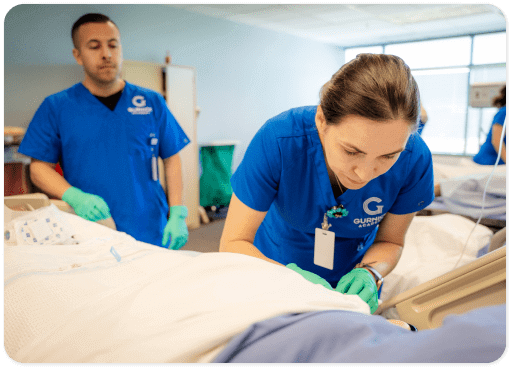
- Concord, CA via Distance Education
- About the Program
- Program Description
- Goals and Objectives
- Educational Objectives
- Length and Schedule
- Requirements
- Admission Point System
- Career Services
- Job Outlook and Salary
- Program Outline
- Distance Education
- Accreditation and Approval
- Financial Aid
- FAQ
- Apply now
- External Resources
12 Months Program*
Distance Education
Job Placement Assistance
Veteran and Military Benefits
*45 Approved Instructional Weeks
| Student Tuition Recovery Fund (Non-Refundable) | $27.50 |
| Registration Fee (Non-Refundable) | $100.00 |
| Books (Non-Refundable, if accessed) | $225.00 |
| Tuition Fee | $10,368.00 |
|
TOTAL PROGRAM COST* *Program Fees are subject to change |
$10,720.50 |
Alumni Grant (for Gurnick Academy of Medical Arts ADN/LVN to RN Graduates): $1,800.00
Program fees are subject to change.*
*Students must obtain several books independently, and the cost of these books is not included in the “Books Fee.” Please refer to the school catalog’s RN to BSN Program Textbook Distribution Disclosure.
Please Note
The RN-to-BSN pathway of the Bachelor of Science in Nursing program is intended for students who have graduated from a Board-approved Registered Nurse program from an accredited institution and possess a current RN license. Please consider enrolling in our Generic Bachelor of Science in Nursing program if you do not meet this requirement.
About the B.S. in Nursing (RN to BSN) Program
Program Mission
Gurnick Academy of Medical Arts’ mission is to offer quality allied health and nursing programs that integrate professional skills, career-focused education, and hands-on practical experience by empowering students to develop and achieve their personal and career goals.
The purpose of the Bachelor of Science in Nursing is to achieve distinction in the undergraduate nursing program and to advance the mission of Gurnick Academy of Medical Arts by:
- Actively preparing the baccalaureate student to assume roles in nursing practice following the regulatory and accrediting agencies.
- Actively preparing the baccalaureate student to bear responsibility in practice, education, and research.
- Promoting public health by developing new knowledge and applying it to innovate healthcare delivery in a public health setting.
- Providing insight, assistance, and teaching of health care programs responding to public health’s growing needs and acuity.
- Being a champion in nursing research and scholarship.
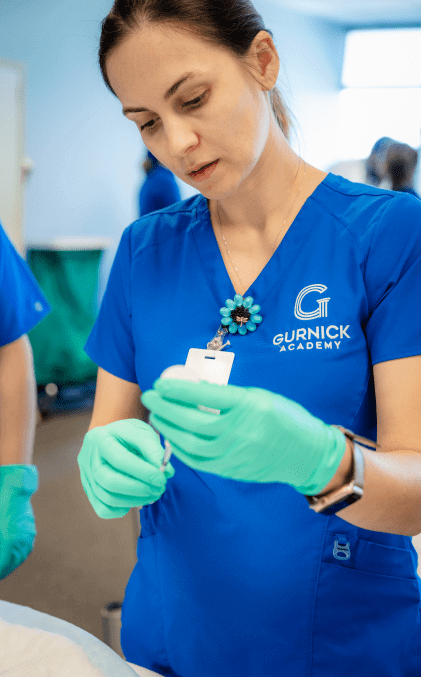

B.S. in Nursing (RN to BSN) Program Description
Students will study a wide range of curricular content required for licensure by the California Board of Registered Nursing. To develop an advanced skill base in demand by employers, students will also study the organization and function of health services, ethics and law in health care, writing skills for health professionals, leadership and management, nursing research, and patient education essentials.
Gurnick Academy of Medical Arts emphasizes evidence-based practice and critical thinking skills to provide safe and effective care to patients from diverse and multicultural populations and communities across the lifespan. Students will also take Community Health Nursing, which includes certification in reporting child abuse and disaster management, following the Public Health California Code of Regulations’ requirements.
Program Goals and Objectives
Providing a learning environment that nurtures cultural diversity and differences in learning styles and is free of discrimination and judgment.
Graduating well-prepared Bachelor of Science in Nursing students demonstrate clinical behaviors and judgments to meet the essential competencies necessary to obtain licensure and join the workforce as entry-level nurses.
Ensure that graduates have the necessary knowledge and skills to respond to the community’s growing healthcare delivery and practice needs.
Produce well-rounded nurses that are culturally sensitive, situation-adaptive, and active advocates of the community it serves.
Continuously visit its curriculum and revise it to ensure its nursing graduates adapt to rapid healthcare delivery and practice changes.
Build a learning platform to inspire nursing graduates to pursue recognition and excellence in practice, research, and community outreach.
Foster nurturing partnerships with its community organizations for academic programs.
Inspire nursing graduates to seek higher education by developing a plan for faculty growth and professional development.
B.S. in Nursing (RN to BSN) Program Terminal Educational Objectives
By the end of the baccalaureate nursing program, the graduate will be able to:
- Apply theoretical and clinical concepts of health promotion and disease prevention practices, providing a safe and nurturing environment, and leading innovations in nursing practices according to nursing regulations and accrediting agencies.
- Critically appraise, analyze, and create a framework that integrates academic and clinical learning into everyday practice and leadership activities.
- Evaluate patient care practices that are evidence-based and community-driven.
- Express a strong commitment to nursing research through active participation in professional organizations and education advancement.
- Demonstrate leadership by becoming a well-rounded nurse who is ethical, respectful, well-informed, and fully responsive to the needs and acuity of the community they serve.
Length and Schedule
*(45 Approved Instructional Weeks)
RN to BSN Advanced Placement (3 semesters for a total of 36 semester credit hours)
The Bachelor of Science in Nursing (RN to BSN) admission track is a three (3) semester distance education program for RNs to complete their Bachelor of Science Degree in Nursing in one year. Each semester is 15 weeks long and covers five (5) courses. Course instructors will open a new lecture each weekday, and assignments must be submitted by specified deadlines and indicated in the course syllabi.
The two practicum courses, Community Health Nursing Practicum and Leadership/Management in Nursing Practicum require students to do six (6) hours each week for 15 weeks in a clinical setting. Students are responsible for obtaining their local clinical site/preceptor. Based on where they work or reside, Gurnick Academy of Medical Arts has agreements with multiple clinical sites in the Bay Area, California, where students can alternatively complete their clinical/preceptorship.
This program’s expected completion time is forty-five (45) weeks, excluding holidays and vacations. Instructor to Student ratio is 1:25 in lectures and 1:1 during clinical.
At Gurnick Academy of Medical Arts (professional courses only), students receive four hundred eighty (480) hours of didactic instruction and one hundred eighty (180) hours of clinical, allowing them to apply the lecture topics in practical use. Besides didactic instruction and clinical time, nine-hundred sixty (960) hours will be student outside-school preparation time.
Requirements
- Admission Requirements
- Performance Requirements
- Graduation Requirements
Please review the following requirements: General Admission Requirements for all programs.
Applicants must:
- Graduate from an approved Registered Nursing program.
- Provide official transcripts that reflect a minimum cumulative GPA of 2.5 in all college coursework.
- Pass an interview with the Program Director or Associate Program Director in person or via a conferencing platform, if necessary.
- Submit a 2–3 page typed essay on why they have chosen professional nursing as a career.
- Provide a resume showing previous healthcare experience.
- Submit proof of current RN license.
- Complete all courses or equivalent listed in the Registered Nursing Prerequisite Courses: RN to BSN Pathway table.
Each program has specific physical and non-physical requirements to ensure students’ and patients’ safety and welfare. Almost all of our students (check with an admission advisor if applicable) must be able to:
- Handle stressful situations related to technical and procedural standards and patient care situations.
- Respond quickly and appropriately to emergencies using the English language.
- Communicate effectively with patients and staff using clear English in verbal and written forms.
- Read and interpret (or learn how to) patient charts and requisitions.
- Tolerate strong, unpleasant odors.
- Provide physical and emotional support to the patients during procedures.
- Report clearly and legibly through progress notes in patient charts.
- Meet class standards for successful course completion.
- Collect, interpret, and integrate data about patients.
- Recognize and respond appropriately to individuals of all ages, genders, and races from all socioeconomic, religious, and cultural backgrounds.
- Cope with heavy workloads, demanding patients, and life-threatening clinical situations.
- Recognize and respond appropriately to potentially hazardous situations.
- Demonstrate the physical and emotional capacity to work a 40-hour week on the clinical rotation.
- Behave in an ethical, sound, competent, compassionate, and professional manner in the classroom and the clinic.
- Lift/carry:
- One (1) pound (0.45 kilograms)—five (5) pounds (2.27 kilograms) frequently—image receptors, lead aprons, files.
- 20 pounds (9.07 kilograms)—50 pounds (22.68 kilograms) occasionally—patient transfers and positioning.
- 50 pounds (22.68 kilograms)—70 pounds (31.75 kilograms) rarely to occasionally—patient transfers.
- Stand and walk for up to eight (8) hours per day.
- Carry a minimum of 20 pounds (9.07 kg) while walking a distance of 100 feet (30.48 m).
- Bend or flex the upper trunk forward up to 45 degrees and flex the lower torso into a squatting position.
- Rotate the upper trunk up to 30 degrees to the right and left.
- Reach at least 72 inches (1.83 m) above floor level or an entire arm’s reach.
- Utilize the sense of hearing to communicate effectively with the patients and the healthcare team.
- Utilize the sense of vision in all levels of hospital lighting, varying from low illumination to bright light levels.
- Sit in class for up to six (6) hours per day.
- Palpate anatomical structures and handle injured body parts without causing injury to the patient.
- During exercise, give manual resistance to a patient’s arm, leg, or trunk.
- Move with adequate agility and speed to ensure patient safety.
- Walk and balance well enough to help patients walk and transfer with or without equipment while preventing injury to patients and themselves.
- Safely grasp and manipulate small objects and set dials on electrical equipment.
- Use visual, auditory, and tactile senses to observe patients and collect and interpret data.
- Respond to warning sounds, machine alarms, and calls for help.
The following requirements must be met for a student to graduate from the RN to BSN program at Gurnick Academy of Medical Arts:
- The successful completion of all program courses and hours.
- All financial obligations, including tuition and textbook charges, have been met.
Please review the following requirements: General Admission Requirements for all programs.
Applicants must:
- Graduate from an approved Registered Nursing program.
- Provide official transcripts that reflect a minimum cumulative GPA of 2.5 in all college coursework.
- Pass an interview with the Program Director or Associate Program Director in person or via a conferencing platform, if necessary.
- Submit a 2–3 page typed essay on why they have chosen professional nursing as a career.
- Provide a resume showing previous healthcare experience.
- Submit proof of current RN license.
- Complete all courses or equivalent listed in the Registered Nursing Prerequisite Courses: RN to BSN Pathway table.
Each program has specific physical and non-physical requirements to ensure students’ and patients’ safety and welfare. Almost all of our students (check with an admission advisor if applicable) must be able to:
- Handle stressful situations related to technical and procedural standards and patient care situations.
- Respond quickly and appropriately to emergencies using the English language.
- Communicate effectively with patients and staff using clear English in verbal and written forms.
- Read and interpret (or learn how to) patient charts and requisitions.
- Tolerate strong, unpleasant odors.
- Provide physical and emotional support to the patients during procedures.
- Report clearly and legibly through progress notes in patient charts.
- Meet class standards for successful course completion.
- Collect, interpret, and integrate data about patients.
- Recognize and respond appropriately to individuals of all ages, genders, and races from all socioeconomic, religious, and cultural backgrounds.
- Cope with heavy workloads, demanding patients, and life-threatening clinical situations.
- Recognize and respond appropriately to potentially hazardous situations.
- Demonstrate the physical and emotional capacity to work a 40-hour week on the clinical rotation.
- Behave in an ethical, sound, competent, compassionate, and professional manner in the classroom and the clinic.
- Lift/carry:
- One (1) pound (0.45 kilograms)—five (5) pounds (2.27 kilograms) frequently—image receptors, lead aprons, files.
- 20 pounds (9.07 kilograms)—50 pounds (22.68 kilograms) occasionally—patient transfers and positioning.
- 50 pounds (22.68 kilograms)—70 pounds (31.75 kilograms) rarely to occasionally—patient transfers.
- Stand and walk for up to eight (8) hours per day.
- Carry a minimum of 20 pounds (9.07 kg) while walking a distance of 100 feet (30.48 m).
- Bend or flex the upper trunk forward up to 45 degrees and flex the lower torso into a squatting position.
- Rotate the upper trunk up to 30 degrees to the right and left.
- Reach at least 72 inches (1.83 m) above floor level or an entire arm’s reach.
- Utilize the sense of hearing to communicate effectively with the patients and the healthcare team.
- Utilize the sense of vision in all levels of hospital lighting, varying from low illumination to bright light levels.
- Sit in class for up to six (6) hours per day.
- Palpate anatomical structures and handle injured body parts without causing injury to the patient.
- During exercise, give manual resistance to a patient’s arm, leg, or trunk.
- Move with adequate agility and speed to ensure patient safety.
- Walk and balance well enough to help patients walk and transfer with or without equipment while preventing injury to patients and themselves.
- Safely grasp and manipulate small objects and set dials on electrical equipment.
- Use visual, auditory, and tactile senses to observe patients and collect and interpret data.
- Respond to warning sounds, machine alarms, and calls for help.
The following requirements must be met for a student to graduate from the RN to BSN program at Gurnick Academy of Medical Arts:
- The successful completion of all program courses and hours.
- All financial obligations, including tuition and textbook charges, have been met.
B.S. in Nursing (RN to BSN) Program Admission Point System
Applicants are deemed qualified on a point system. The highest-ranked (above a minimum) will be offered seats in the program. Gurnick Academy of Medical Arts uses the following point system to evaluate each applicant, showing the maximum achievable score.
| RN to BSN Program - Admission | Possible Points |
|---|---|
| GPA | |
| GPA up to 3.39 | 1 |
| GPA of 3.40-3.79 | 2 |
| GPA of 3.80-4.00 | 3 |
| Essay | |
| Clarity of Purpose | 1 |
| Correct grammar, spelling, and punctuation | 1 |
| Essay is developed using logic and persuasion | 1 |
| Resume Showing Previous Healthcare experience | |
| Up to 2 Years of related experience | 1 |
| 2-4 Years | 2 |
| 4+ Years | 3 |
| Distance Education Questionnaire | |
| Score of 28-33 | 3 |
| Score of 15-27 | 2 |
| Score of 14 or less | 1 |
| RN to BSN Program - Interview | Points Possible |
|---|---|
| Presentation/Appearance | 0.5 |
| Personality | 0.5 |
| Communication Skills | 0.5 |
| Maturity | 0.5 |
| Attitude | 0.5 |
| Overall Impression | 0.5 |
Career Services
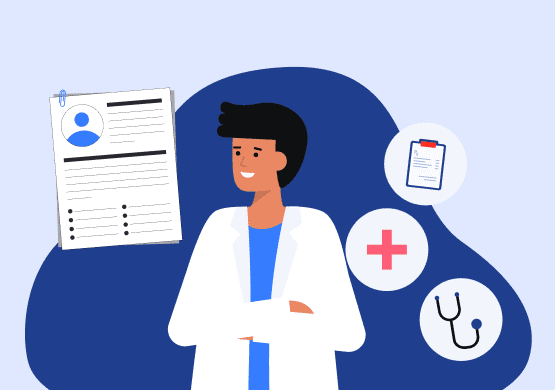
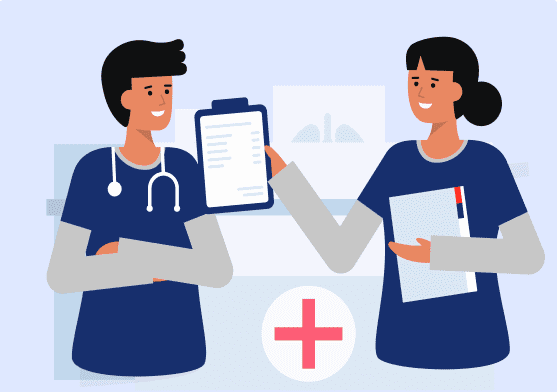




Job Outlook and Salary
View the O*Net Online 29-1141.00 Registered Nurses job profile for general information about the profession. Find information about salary data for California.
Local Wages for Registered Nurses in California
*Gurnick Academy of Medical Arts has not determined if any programs fulfill the educational requirements for specific professional licensure or certification required for employment outside California unless identified by the program below. It is recommended that students in or planning to relocate to a state apart from where the program’s physical campus is located research any certification or employment requirements for their intended state.
B.S. in Nursing (RN to BSN) Program Outline
B.S. in Nursing (RN to BSN) Program General Education Transfer Courses Outline
| Course Number | Title | ABHES Clock Hours | BRN Clock Hours | Semester Credit Hours |
|---|---|---|---|---|
| GE 020A | Human Body in Health & Disease I w/ Lab | 75.0 | 90.0 | 4.0 |
| GE 041 | General Microbiology with Lab | 75.0 | 90.0 | 4.0 |
| GE 222 | English Reading and Composition | 45.0 | 45.0 | 3.0 |
| GE 112 | Algebra I | 45.0 | 45.0 | 3.0 |
| GE 201 | Introduction to Sociology | 45.0 | 45.0 | 3.0 |
| GE 020B | Human Body in Health & Disease II w/ Lab | 75.0 | 90.0 | 4.0 |
| GE 031 | Nutrition in Health & Disease | 45.0 | 45.0 | 3.0 |
| GE 202 | General Psychology | 45.0 | 45.0 | 3.0 |
| GE 240 | Public Speaking, Basics of Effective Communication | 45.0 | 45.0 | 3.0 |
| GE 110 | Critical Thinking | 45.0 | 45.0 | 3.0 |
| Total | 540.0 | 585.0 | 33.0 |
B.S. in Nursing (RN to BSN) Program Prerequisite Courses Outline
| Course Number | Title | Clock Hours | Semester Credit Hours |
|---|---|---|---|
| RN 100 | Fundamentals of Nursing Theory* | 45.0 | 3.0 |
| RN 101 | Fundamentals of Nursing Clinical and Lab* | 157.5 | 3.5 |
| RN 102 | Health Assessment Theory* | 45.0 | 3.0 |
| RN 103 | Health Assessment Skills Lab* | 67.5 | 1.5 |
| RN 104 | Pharmacology | 45.0 | 3.0 |
| RN 106 | Pathophysiology | 45.0 | 3.0 |
| RN 200 | Medical/Surgical I Theory-Introduction to Med/Surg* | 45.0 | 3.0 |
| RN 201 | Medical/Surgical I Clinical-Introduction to Med/Surg* | 90.0 | 2.0 |
| RN 202 | Medical/Surgical II Theory-Intermediate to Med/Surg* | 45.0 | 3.0 |
| RN 203 | Medical/Surgical II Clinical-Intermediate to Med/Surg* | 90.0 | 2.0 |
| RN 300 | Maternal Newborn Theory* | 45.0 | 3.0 |
| RN 301 | Maternal Newborn Clinical* | 67.5 | 1.5 |
| RN 302 | Care of Children Theory* | 45.0 | 3.0 |
| RN 303 | Care of Children Clinical* | 67.5 | 1.5 |
| RN 304 | Medical/Surgical III Theory-Advanced Med/Surg* | 45.0 | 3.0 |
| RN 305 | Medical/Surgical III Clinical-Advanced Med/Surg* | 90.0 | 2.0 |
| RN 400 | Mental Health Nursing Theory* | 45.0 | 3.0 |
| RN 401 | Mental Health Nursing Clinical* | 90.0 | 2.0 |
| RN 402 | Medical/Surgical IV Theory-Complex/Critical Care, Med/Surg, & Leadership* | 45.0 | 3.0 |
| RN 403 | Medical/Surgical IV Clinical-Complex/Critical Care, Med/Surg, & Leadership* | 90.0 | 2.0 |
| Total | 1,305.0 | 51.0 |
*Paired course. See the course description for more details.
B.S. in Nursing (RN to BSN) Program General Education Courses Outline
| Course Number | Title | Clock Hours | Semester Credit Hours |
|---|---|---|---|
| GE 103 | Growth and Development Through Lifespan | 45.0 | 3.0 |
| GE 111 | Research Statistics | 45.0 | 3.0 |
| GEH 101 | Organization & Function of Health Services | 45.0 | 3.0 |
| GEH 102 | Essentials of Patient Education | 45.0 | 3.0 |
| GEH 201 | Holistic Health & Complementary Alternative Medicine | 30.0 | 2.0 |
| GEH 301 | Ethics and Law in Health Science | 45.0 | 3.0 |
| Total | 255.0 | 17.0 |
B.S. in Nursing (RN to BSN) Program Professional Course Outline
| Course Number | Title | Clock Hours | Semester Credit Hours |
|---|---|---|---|
| RN 404 | Community Health Nursing Theory* | 45.0 | 3.0 |
| RN 405 | Community Health Nursing Clinical* | 90.0 | 2.0 |
| RN 500 | Leadership/Management in Nursing Theory | 45.0 | 3.0 |
| RN 501 | Leadership/Management in Nursing Clinical | 90.0 | 2.0 |
| RN 502 | Nursing Informatics | 45.0 | 3.0 |
| RN 504 | Nursing Research Theory | 45.0 | 3.0 |
| RN 505 | Bachelors Achievement Capstone Portfolio | 45.0 | 3.0 |
| Total Professional Courses Total Degree (Prerequisites plus Professional) | 405.0 2505.0 | 19.0 120.0 |
*Paired course. See the course description for more details.
Read the RN to BSN Program Course Descriptions.
Minimum Requirements for Enrolling in Distance Education
Minimum Student Skills
Students are expected to have at least the following skills before taking distance education courses:
- Basic Keyboarding competence.
- Elementary knowledge of their computer operating system.
- Basic knowledge of:
- Word processing.
- Sending and receiving emails with attachments.
- Using an internet browser and a search engine.
Minimum Hardware Requirements
- Access to a modern Windows 10 or macOS computer. Don’t hesitate to contact IT support with questions about other operating systems.
- Internet access with a high-speed broadband connection.
- Internet service provider for home access or access from work (must have before starting the course).
- Access to the distance education environment for at least ten (10) hours per week.
- Students must be able to video conference in real-time. Appropriate equipment may include:
- Camera (could be built into the laptop).
- Microphone (could be built into the laptop).
Minimum Software Requirements
- Google Chrome internet browser.
- An office suite tool such as Google Docs, Microsoft Office 365, LibreOffice, or Apache Open Office.
- One or more courses may require special plug-ins to access streaming media, PDF files, or other web components.
- Antivirus software such as Microsoft Defender.
- A conferencing tool such as Google Hangouts or Zoom.
Accreditation and Approval
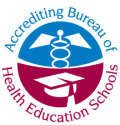
Gurnick Academy of Medical Arts holds national institutional accreditation by the Accrediting Bureau of Health Education Schools (ABHES). ABHES accreditation does not include continuing education courses.
ABHES Mailing Address:
6116 Executive Blvd., Suite 730
North Bethesda, MD 20852
ABHES Phone: 301-291-7550
ABHES Email: Info
ABHES Website: abhes.org
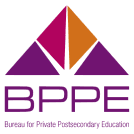
Gurnick Academy of Medical Arts is a private institution approved to operate by the California Bureau for Private Postsecondary Education. Approval to operate means the institution is compliant with the minimum standards in the California Private Postsecondary Education Act (CPPEA) of 2009 (as amended) and Division 7.5 of Title 5 of the California Code of Regulations. CPPEA governs the Bureau for Private Postsecondary Education.
The Office of Student Assistance and Relief is available to support prospective students, current students, or past students of private postsecondary educational institutions in making informed decisions, understanding their rights, and navigating available services and relief options. The office may be reached by calling (888) 370- 7589, option #5, or by visiting osar.bppe.ca.gov.
BPPE Mailing Address:
1747 N. Market Blvd., Suite 225
Sacramento, CA 95834
BPPE Phone: 888-370-7589
BPPE Email: General
BPPE Website: bppe.ca.gov
Financial Aid
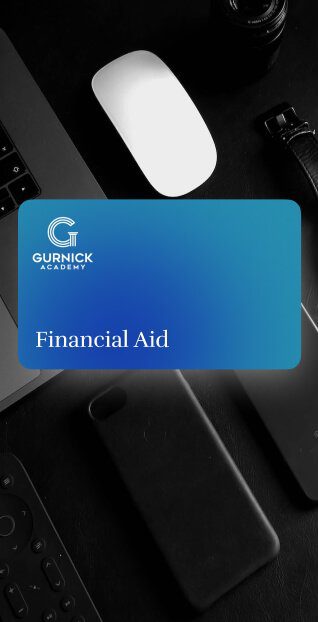
Gurnick Academy of Medical Arts aims to help every student obtain Financial Aid* to attend their chosen program. Gurnick Academy of Medical Arts participates in various federal and state student financial assistance programs.
The financial aid programs are designed to assist students with inadequate financial resources to meet their education’s total cost. Each campus has a Financial Aid Advisor who can help students with any financial aid questions.
For more information, please visit our Financial Aid page.
*for those who qualify
B.S. in Nursing (RN to BSN) Program FAQs
Please choose from the dropdown to review a category of FAQs
-
According to the National Council of State Boards of Nursing, a leader in regulatory information, a Registered Nurse (RN) is an individual who has graduated from a state-approved school of nursing with either an associate or bachelor’s degree level of education, passed the NCLEX-RN Examination, and is licensed by a state board of nursing, allowing them to provide patient care.1 The educational requirements for the role can be either associate or bachelor-level degrees.
Citation:
1 “Definition of Nursing Terms.” National Council of State Boards of Nursing, Inc. 2022. (Accessed Mar. 15, 2022.)
-
Gurnick Academy of Medical Arts Bachelor of Arts’ Nursing program offers the following paths to completion:
General or Full BSN Program, 32 months.*
LVN to BSN Advanced Placement, 15 months.†
RN to BSN Advanced Placement, 12 months.‡*120 Approved Instructional Weeks
†64 Approved Instructional Weeks
‡45 Approved Instructional Weeks
-
According to the National Council of State Boards of Nursing, a leader in regulatory information, a Registered Nurse (RN) is an individual who has graduated from a state-approved school of nursing with either an associate or bachelor’s degree level of education, passed the NCLEX-RN examination, and is licensed by a state board of nursing, allowing them to provide patient care.1 The educational requirements for the role can be either associate or bachelor-level degrees.
A Licensed Vocational Nurse (LVN) is an entry-level healthcare professional responsible for rendering primary nursing care within a directed scope of practice while performing a limited range of nursing functions. They have obtained either a nursing diploma or an associate degree in nursing, taken the NCLEX-PN, and obtained state licensure. He or she practices under the direction of a Physician and/or a Registered Nurse or other advanced healthcare professional.2
Citations:
1 “Definition of Nursing Terms.” National Council of State Boards of Nursing, Inc. 2022. (Accessed Mar. 15, 2022.)
2 “Licensed Vocational Nurses.” BVNPT. The State of California. 2022. (Accessed Mar. 15, 2022.)
-
According to Career Profiles, an Associate Degree in Nursing (ADN) or Associate of Science in Nursing (ASN) are two-year degrees for those seeking to become Registered Nurses.1 While Bachelor Degrees in Nursing (BSNs) are four-year programs for those seeking to become Registered Nurses.*1 Both the ADN/ASN and BSN degrees qualify students to sit for the NCLEX-RN exam and apply for RN licensure.1
According to Career Profiles, ADN programs generally focus more on practical skills, while BSN programs delve more deeply into theoretical knowledge. However, the core curriculum for both programs is typically quite similar, with courses in community health nursing, gerontological nursing, pediatrics, maternal and newborn nursing, and psychiatric nursing. BSN programs include courses not offered in ADN programs, such as nursing technology, research, and informatics.1
*There are several accelerated programs (fast-track or bridge) that may truncate this timeframe.
Citations:
1^a, b, c “Associate Degree in Nursing (ADN/ASN).” Www.careerprofiles.info. Career Profiles. 2022. (Accessed June 7, 2022.)
-
To have information sent to you or a school representative contact you, fill out our online contact form here. Or call us at 1-877-GURNICK.
-
The first step is to submit an online application.
-
Applicants should follow the general requirements for entry into Gurnick Academy of Medical Arts. These can be found at General Requirements for Admissions link here.
-
Please find more info about the Foreign Transcript/Diploma Evaluations process here.
-
The deadline for applications is one week before the online orientation and one week before the semester’s official start date. Please see an advisor for the current academic calendar.
-
Please contact our Admissions Team for more information.
-
Gurnick Academy offers the Bachelor of Science in Nursing (BSN) degree program in the following paths to completion:
LVN to BSN Advanced Placement, 15 months.*
RN to BSN Advanced Placement, 12 months.†*64 Approved Instructional Weeks
†45 Approved Instructional Weeks -
Gurnick Academy of Medical Arts holds national institutional accreditation by the Accrediting Bureau of Health Education Schools (ABHES). ABHES accreditation does not include continuing education courses
Additionally, Gurnick Academy of Medical Arts is approved by the California Board of Registered Nursing (BRN) to provide the Bachelor of Science in Nursing (BSN) program.
Gurnick Academy of Medical Arts is a private institution approved to operate by the California Bureau for Private Postsecondary Education. Approval to operate means the institution is compliant with the minimum standards in the California Private Postsecondary Education Act (CPPEA) of 2009 (as amended) and Division 7.5 of Title 5 of the California Code of Regulations. CPPEA governs the Bureau for Private Postsecondary Education.
-
This is a full-time program and requires a commitment to the profession.
-
No. We currently do not offer night classes for this program.
-
To review the scheduled breaks during the school year, please see Gurnick Academy’s Addendum.
-
Please find more info about remediation in our Catalog and Addendum.
-
No. Each student will complete clinical externships, which will be provided.
-
No. All externships are unpaid positions.
-
Financial aid is available for those who qualify. Gurnick Academy of Medical Arts participates in various federal and state student financial assistance programs.
-
Depending on individual needs or preferences, students may be able to work during the program. However, this depends on the type of work, each student’s individual needs, work-study balances, and life schedules and commitments.
There are some guidelines for study/life balance. The Hechinger Report cites a 2018 Georgetown University study regarding students working while enrolled in higher education. According to the report, “Students who worked had lower grades and were more likely to drop out” than those who did not work during their college tenure. The report states, “The risk was especially high for low-income students. Other studies seem to concur with this report. The conventional advice to students is to try to work under 15 hours a week if they want to finish their degrees,” says the article.1
Citation:
1 Barshay, Jill. “Working in College Interferes With Studies But Boosts Adult Earnings.” The Hechinger Report. June 17, 2019. (Accessed. June 21, 2022.)
-
This program offers a four-year Bachelor of Science-level degree.
-
Test preparation is strongly emphasized throughout our students’ entire curriculum at Gurnick Academy of Medical Arts.
-
We have a dedicated Career Services department that may assist with job placements for all students who complete the program. However, we cannot guarantee employment.
-
According to the Bureau of Labor Statistics, employment of Registered Nurses is projected to grow 9 percent from 2020–2030, about as fast as the average for all occupations.1
About 194,500 openings for Registered Nurses are projected each year, on average, over the decade. Many of these openings are expected to result from the need to replace workers who transfer to different occupations or exit the labor force, such as to retire.1
Citations:
1^a, b Bureau of Labor Statistics, U.S. Department of Labor, Occupational Outlook Handbook. April 18, 2022. Registered Nurses. (Accessed June 10, 2022.)
-
According to Indeed.com, typical interview questions for Registered Nurses include the following:
- Do you work well with other nurses, doctors, and staff?
- How would you handle a difficult patient?
- How do you handle workplace stress?
- What do you do if your replacement does not arrive?
- How would you handle a disagreement with a doctor?
- Describe how you manage a busy workload
- Do you have any professional affiliations?
- How would you handle a crisis such as an outbreak?
- How would you handle a patient who struggles with pain management?
- How do you respond when people ask for your personal diagnosis outside of a clinical setting?1
Citation:
1 Glisson, Sadie. “Top Ten Nursing Interview Questions and Answers.” Indeed Career Guide. May 25, 2022. (Accessed June 10, 2022.)
-
According to the online resource, Minority Nurse, poor management, and the lack of support from their management teams are among the most significant complaints nurses have. What makes a poor manager? Nurses may say it does not value open communication and feedback from his or her staff.1 Another chief complaint within the profession seems to be burnout. Most often, burnout is due to staffing shortages.
Citation:
1 Johnson, Nachole. “Why Good Nurses Leave the Profession.” Minority Nurse, Springer Publishing Company. Dec. 13, 2018. (Accessed April 26, 2022.)
-
According to the Bureau of Labor Statistics, Registered Nurses in California made a median annual wage of $120,5601 as of May 2020. While the national median annual pay for Registered Nurses in 2021 was $77,600 per year or $37.31 per hour.2
However, it’s vital to remember salaries differ considerably based on several factors, including years of experience, schooling, workplace setting, geographic location, and other variables.
1 “Registered Nurses.” Occupational Outlook Handbook. Bureau of Labor Statistics, US Department of Labor. Sept. 8, 2021. (Accessed Nov. 16, 2021).
2 Bureau of Labor Statistics, US Department of Labor, Occupational Outlook Handbook. April 18, 2022. Registered Nurses. (Accessed June 10, 2022).
-
Beyond helping, caring, and serving others, many Registered Nurses report general satisfaction within their professions. According to US News and World Report, RNs received an overall score of 7.4 in job satisfaction. Registered Nurses ranked #5 in Best Health Care Jobs. Best Health Care Jobs and #12 in 100 Best Jobs.1 Jobs are rated according to their ability to offer an elusive mix of factors, including stress, professional satisfaction, work-life balance, salary, and more.
Citation:
1 News Staff, “Registered Nurse Ranks Among Best Jobs of 2019.” Usnews.com, 2016. (Accessed May 25, 2022.)
-
The board of nursing in each state defines what level of care Registered Nurses can and can’t provide through an official document called their “scope of practice.”1 One should consult their state board of nursing to understand their scope of practice. For California, go here.
Citation:
1 “California Board of Registered Nursing.” Ca.gov, State of California. 2019. (Accessed June 8, 2022.)
-
While they may not prescribe, Registered Nurses may administer medications. “Notwithstanding any other provision of law, a Registered Nurse may dispense drugs or devices upon an order by a licensed physician and surgeon or by a certified nurse-midwife, nurse practitioner, or physician assistant.”1 (Article 2, Scope of Regulation)
Citation:
1 “California Nursing Practice Act, Scope of Regulation.” CA.Gov, California Board of Registered Nursing (BRN), State of California Department of Consumer Affairs, (DCA). Jan. 1, 2013. (Accessed June 10, 2022.)
-
Other Registered Nursing functions besides the administration of medication include:
- Venipuncture or intravenous therapy.
- Parenteral or tube feedings.
- Invasive procedures including inserting nasogastric tubes, inserting catheters, or tracheal suctioning.
- Assessment of patient condition.
- Educating patients and their families concerning the patient’s health care problems, including post-discharge care.
- Moderate complexity laboratory tests.1 (Article 2, Scope of Regulation)
1 “California Nursing Practice Act, Scope of Regulation.” CA.Gov, California Board of Registered Nursing (BRN), State of California Department of Consumer Affairs, (DCA). Jan. 1, 2013. (Accessed June 10, 2022.)
-
Yes. WebMD defines Registered Nurses as “the backbone of the US healthcare system.” A Registered Nurse is a “licensed medical professional who provides hands-on care in different medical and community settings,” further says the journal.1
Citation:
1 “WebMD Editorial Contributors.” WebMD, WebMd, LLC. June 23, 2021. (Accessed June 8 8, 2022.)
-
According to O*NET, the top tools Registered Nurses use include the following items.
- Acute care fetal or maternal monitoring units—bilimeters; fetal monitors; fetal scalp electrodes.
- Diagnostic or interventional vascular catheters for general use—angiocaths; pulmonary artery catheters.
- Electrosurgical or electrocautery equipment—electrosurgical devices; grounding pads; loop electrosurgical excision procedure LEEP equipment.
- Endoscopic hemostatic balloons or needles or tubes or accessories—curved hemostats; hemostats; straight hemostats.
- Glucose monitors or meters—capillary glucose monitors; glucose testing equipment.
- Manual resuscitators—manual resuscitation bags; manually-operated oxygen supply resuscitators.
- Medical or surgical suction or vacuum appliances—nasal suctioning equipment; oral suctioning equipment; suction equipment; tracheal suctioning equipment.
- Medical oxygen masks or parts—non-rebreather masks; partial masks; ventimasks.
- Peripherally inserted central catheters PICC—double lumen catheters; peripheral angiocaths; single lumen catheters; triple lumen catheters.
- Reflex hammers or mallets—percussion hammers; reflex hammers.1
Citation:
1 “29-1141.00-Registered Nurses.” O*NET OnLine, National Center for O*NET Development. (Accessed June 7, 2022.)
-
Yes. A master’s level nurse is an Advanced Practice Registered Nurse (APRN). However, the term APRN can be an umbrella term for nursing professionals who have earned upper-level degrees, including master’s or doctoral degrees. According to the National Council of State Boards of Nursing, APRNs include these nurse careers: clinical nurse specialists (CNS), nurse practitioners (NPs), certified nurse-midwives (CNMs), and nurse anesthetists (CRNAs).1
Citations:
1 “Advanced Practice Nursing.” Nursinglicensemap.com, 2U, Inc. Sept. 2021. (Accessed June 8, 2022.)
-
Yes. According to the NurseJournal, the profession offers two distinct doctorate-level educational pathways. These include the Doctor of Nursing Practice (DNP) and the Ph.D. in Nursing Programs. According to the Journal, the DNP is generally sought by those pursuing leadership roles within clinical settings. At the same time, the Ph.D. route is usually pursued by those wishing to teach at post-secondary levels or engage in research. After earning bachelorette and master’s degrees and certifications, DNP certification can be completed in approximately two years, while the Ph.D. requires 4–7 years.1
Citation:
1 Krippaehne, Anna-Lise. “Doctorates in Nursing-Ph.D Degrees|NurseJournal.org.” NurseJournal, Red Ventures. Dec. 1, 2021. (Accessed June 7, 2022.)
Have Questions? We are here to help!
Apply Now Form
External Resources for the B.S. in Nursing (RN to BSN) Program
If you are a person who is deaf, hard of hearing, or speech-disabled, please Dial 711 to place a call through California Relay.
